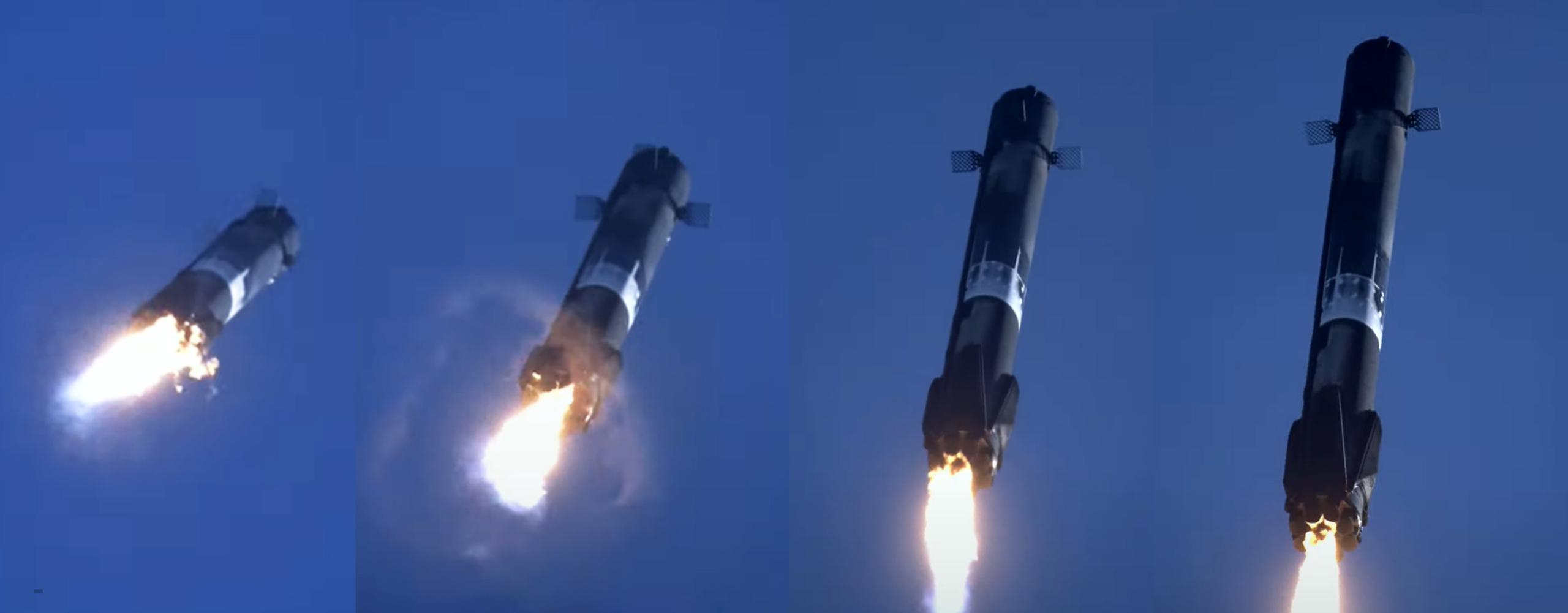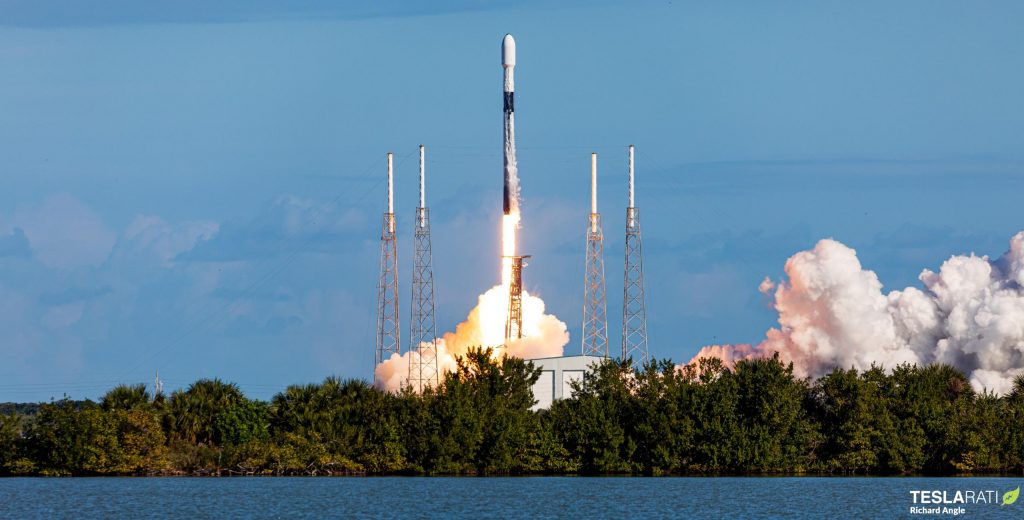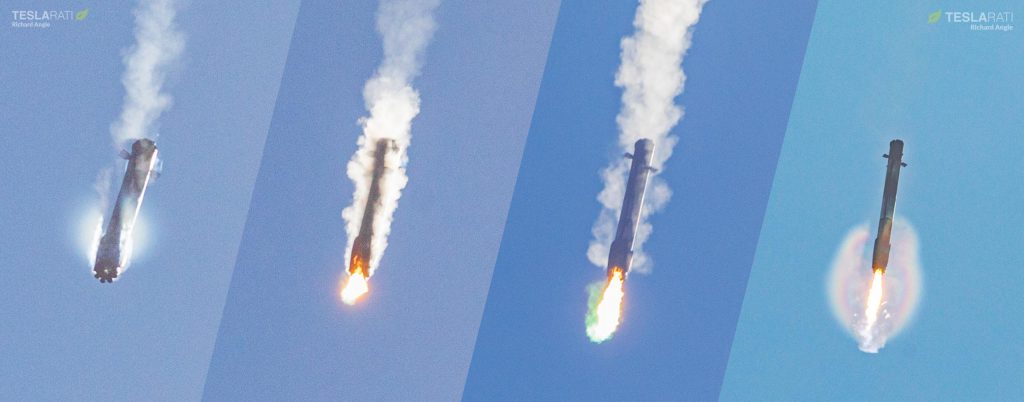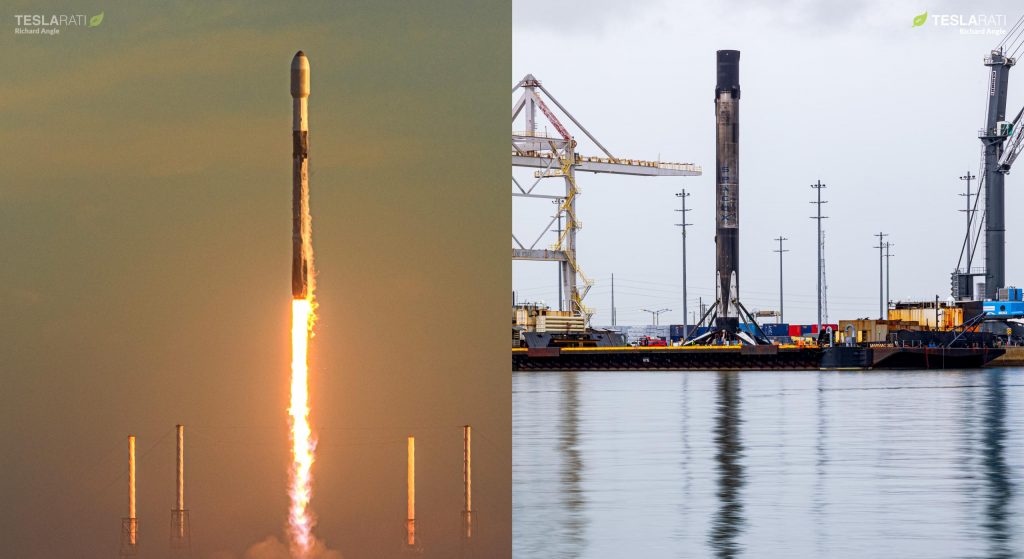

News
SpaceX Falcon booster completes 10th launch and landing in 19 months
Falcon 9 booster B1058 has successfully completed SpaceX’s Transporter-3 mission, acing its tenth orbital-class launch and landing in record time in the process.
The rocket lifted off as planned from Cape Canaveral Space Force Station (CCSFS) Launch Complex 40 (LC-40) at 10:25 am EST (15:25 UTC), Thursday, January 13th with 105 small satellites in tow, marking SpaceX’s third dedicated Smallsat Rideshare Program launch since January 2021. Beginning in 2022, the company aims to conduct three such rideshare launches annually, operating Falcon 9 a bit like an orbital bus service with the capacity for hundreds of small satellites from virtually any person, institution, or company on Earth – all for the unprecedentedly low price of approximately $5,000 per kilogram.


As such, it’s no surprise that SpaceX’s Smallsat Rideshare Program has received as much demand as it has. While relatively insignificant in the scope of the rest of the company’s substantial launch and services revenue, SpaceX has now safely delivered 323 small satellites to orbit for 100+ customers with just three dedicated Transporter missions. As an example, that means that in less than 12 months, SpaceX has launched about three times as many small satellites as dedicated small satellite launch company Rocket Lab has launched in the last four years. It’s no surprise, then, that Rocket Lab has already announced plans to develop a far larger, more reusable rocket after just 20 successful Electron launches.
Meanwhile, as dozens of other startups work on similar small rockets that aim to launch around 500-1500 kg to low Earth orbit (LEO), SpaceX – who began its existence developing the much smaller Falcon 1 rocket – almost immediately abandoned small rockets to focus on the much larger Falcon 9 and Falcon Heavy vehicles. Thanks to reusability, even a moderately loaded two-stage Falcon 9 with a flight-proven booster almost certainly costs SpaceX several times less per kilogram launched than a fully-loaded Falcon 1.
The booster that launched Transporter-3 is a perfect example. Depending on how one measures it, the launch likely cost SpaceX between $15M and $30M to deliver 105 satellites – likely weighing 3-4 tons total – to sun-synchronous orbit (SSO). SpaceX charges customers a fixed price of $1 million for a 200 kg (440 lb) slot on a Transporter mission, meaning that a 4-ton payload would theoretically net the company $20M. In comparison, in 2005, SpaceX was selling Falcon 1 – designed to launch 1 ton to LEO and ~400 kg to SSO – for the equivalent of around $8 million today. In other words, Falcon 1 customers would have paid about $20,000/kg versus $5,000/kg for a slot on a reusable Falcon 9.


The kicker: Transporter-3 was Falcon 9 B1058’s tenth orbital-class launch in just 19 months, averaging one launch every 59 days. Technically, before a major downtick in SpaceX launch activity beginning in mid-2021, B1058 had actually managed eight launches in less than a year – one launch every ~45 days. Transporter-3 isn’t even its first dedicated rideshare mission – the same booster launched another 133 customer smallsats on Transporter-1 almost exactly a year ago. B1058 has also launched two astronauts, two Dragons, a South Korean geostationary communications satellite, and approximately 290 Starlink spacecraft, amounting to around 120 tons (~260,000 lb) of payload delivered to orbit in a year and half – roughly equivalent to an entire Saturn V launch to low Earth orbit for a tiny fraction of even the marginal cost of the giant Moon rocket.
SpaceX has plans for another two Transporter rideshare launches later this year. The company has as many as three more Falcon 9 launches scheduled for the second half of January, including Starlink 4-6 on January 17th and Italy’s CSG-2 Earth observation satellite on January 27th. Starlink 4-7 is expected to launch around the same time as CSG-2.

News
Tesla China quietly posts Robotaxi-related job listing
Tesla China is currently seeking a Low Voltage Electrical Engineer to work on circuit board design for the company’s autonomous vehicles.

Tesla has posted a new job listing in Shanghai explicitly tied to its Robotaxi program, fueling speculation that the company is preparing to launch its dedicated autonomous ride-hailing service in China.
As noted in the listing, Tesla China is currently seeking a Low Voltage Electrical Engineer to work on circuit board design for the company’s autonomous vehicles.
Robotaxi-specific role
The listing, which was shared on social media platform X by industry watcher @tslaming, suggested that Tesla China is looking to fill the role urgently. The job listing itself specifically mentions that the person hired for the role will be working on the Low Voltage Hardware team, which would design the circuit boards that would serve as the nervous system of the Robotaxi.
Key tasks for the role, as indicated in the job listing, include collaboration with PCB layout, firmware, mechanical, program management, and validation teams, among other responsibilities. The role is based in Shanghai.
China Robotaxi launch
China represents a massive potential market for robotaxis, with its dense urban centers and supportive policies in select cities. Tesla has limited permission to roll out FSD in the country, though despite this, its vehicles have been hailed as among the best in the market when it comes to autonomous features. So far, at least, it appears that China supports Tesla’s FSD and Robotaxi rollout.
This was hinted at in November, when Tesla brought the Cybercab to the 8th China International Import Expo (CIIE) in Shanghai, marking the first time that the autonomous two-seater was brought to the Asia-Pacific region. The vehicle, despite not having a release date in China, received a significant amount of interest among the event’s attendees.
Elon Musk
Elon Musk and Tesla AI Director share insights after empty driver seat Robotaxi rides
The executives’ unoccupied tests hint at the rapid progress of Tesla’s unsupervised Robotaxi efforts.

Tesla CEO Elon Musk and AI Director Ashok Elluswamy celebrated Christmas Eve by sharing personal experiences with Robotaxi vehicles that had no safety monitor or occupant in the driver’s seat. Musk described the system’s “perfect driving” around Austin, while Elluswamy posted video from the back seat, calling it “an amazing experience.”
The executives’ unoccupied tests hint at the rapid progress of Tesla’s unsupervised Robotaxi efforts.
Elon and Ashok’s firsthand Robotaxi insights
Prior to Musk and the Tesla AI Director’s posts, sightings of unmanned Teslas navigating public roads were widely shared on social media. One such vehicle was spotted in Austin, Texas, which Elon Musk acknowleged by stating that “Testing is underway with no occupants in the car.”
Based on his Christmas Eve post, Musk seemed to have tested an unmanned Tesla himself. “A Tesla with no safety monitor in the car and me sitting in the passenger seat took me all around Austin on Sunday with perfect driving,” Musk wrote in his post.
Elluswamy responded with a 2-minute video showing himself in the rear of an unmanned Tesla. The video featured the vehicle’s empty front seats, as well as its smooth handling through real-world traffic. He captioned his video with the words, “It’s an amazing experience!”
Towards Unsupervised operations
During an xAI Hackathon earlier this month, Elon Musk mentioned that Tesla owed be removing Safety Monitors from its Robotaxis in Austin in just three weeks. “Unsupervised is pretty much solved at this point. So there will be Tesla Robotaxis operating in Austin with no one in them. Not even anyone in the passenger seat in about three weeks,” he said. Musk echoed similar estimates at the 2025 Annual Shareholder Meeting and the Q3 2025 earnings call.
Considering the insights that were posted Musk and Elluswamy, it does appear that Tesla is working hard towards operating its Robotaxis with no safety monitors. This is quite impressive considering that the service was launched just earlier this year.
Elon Musk
Starlink passes 9 million active customers just weeks after hitting 8 million
The milestone highlights the accelerating growth of Starlink, which has now been adding over 20,000 new users per day.

SpaceX’s Starlink satellite internet service has continued its rapid global expansion, surpassing 9 million active customers just weeks after crossing the 8 million mark.
The milestone highlights the accelerating growth of Starlink, which has now been adding over 20,000 new users per day.
9 million customers
In a post on X, SpaceX stated that Starlink now serves over 9 million active users across 155 countries, territories, and markets. The company reached 8 million customers in early November, meaning it added roughly 1 million subscribers in under seven weeks, or about 21,275 new users on average per day.
“Starlink is connecting more than 9M active customers with high-speed internet across 155 countries, territories, and many other markets,” Starlink wrote in a post on its official X account. SpaceX President Gwynne Shotwell also celebrated the milestone on X. “A huge thank you to all of our customers and congrats to the Starlink team for such an incredible product,” she wrote.
That growth rate reflects both rising demand for broadband in underserved regions and Starlink’s expanding satellite constellation, which now includes more than 9,000 low-Earth-orbit satellites designed to deliver high-speed, low-latency internet worldwide.
Starlink’s momentum
Starlink’s momentum has been building up. SpaceX reported 4.6 million Starlink customers in December 2024, followed by 7 million by August 2025, and 8 million customers in November. Independent data also suggests Starlink usage is rising sharply, with Cloudflare reporting that global web traffic from Starlink users more than doubled in 2025, as noted in an Insider report.
Starlink’s momentum is increasingly tied to SpaceX’s broader financial outlook. Elon Musk has said the satellite network is “by far” the company’s largest revenue driver, and reports suggest SpaceX may be positioning itself for an initial public offering as soon as next year, with valuations estimated as high as $1.5 trillion. Musk has also suggested in the past that Starlink could have its own IPO in the future.








